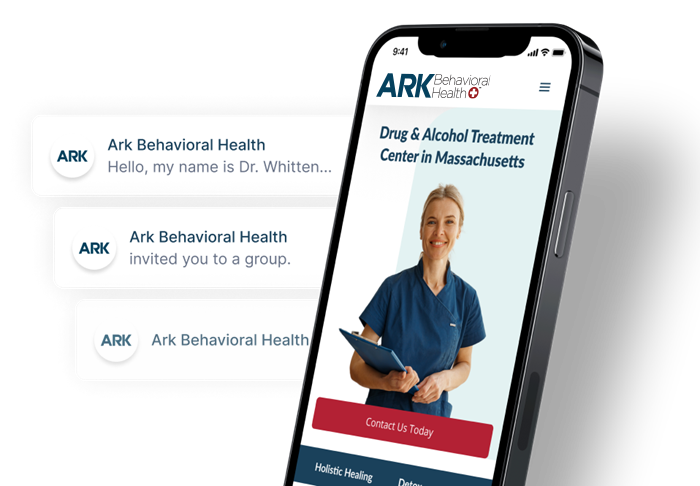Alcohol Withdrawal Syndrome | Timeline, Symptoms, & Detox
- Alcohol Abuse And Withdrawal
- Alcohol Withdrawal Timeline
- Alcohol Withdrawal Symptoms
- Delirium Tremens
- Wernicke-Korsakoff Syndrome
- Post-Acute Withdrawal Syndrome (PAWS)
- Alcohol Detox
- Alcohol Withdrawal FAQs

If you or a loved one drinks heavily or has an alcohol use disorder (AUD), it can be dangerous to go through the withdrawal process alone.
Alcohol withdrawal is unpleasant, but the truth is, it can be life-threatening. The longer and more you engage in heavy drinking, the higher your chance for complications that could result in long-term damage, including death.
Alcohol Abuse And Withdrawal
Alcohol enhances the function of an amino acid called GABA, which helps the brain stay calm. With heavy alcohol use, the brain adjusts by producing less GABA naturally.
If you’re addicted to alcohol and stop drinking, your brain will need time to adjust, and it’ll react adversely to the sudden change.
This adverse effect on your mental health can be hard on the body as well. Most people experience alcohol dependence with heavy use and experience physical symptoms when they stop drinking.
These mental and physical symptoms can be dangerous to your health and lead many people to drink more alcohol for relief. Those who are able to resist relapse during withdrawals risk their lives if they try detoxing alone.
Alcohol Withdrawal Timeline
In many cases, the side of effects of alcohol withdrawal can resolve within two to five days after your last drink. However, every patient is different, and some may experience symptoms for several weeks.
Starting after the last drink, an example of an alcohol withdrawal timeline includes:
- First eight hours: headache, nausea, anxiety, abdominal pain, heart palpitations
- 24 to 72 hours: high blood pressure, disorientation, fast heart rate, rapid breathing
- Five days or more: without detoxification support and treatment, more serious symptoms like seizures, hallucinations, and delirium tremens may occur
Learn more about the Alcohol Withdrawal Timeline
Alcohol Withdrawal Symptoms
If you drink regularly then suddenly stop, you’ll likely experience alcohol withdrawal symptoms within six to twelve hours of your last drink. If you don’t drink heavily, these symptoms may pass in as little as 48 hours.
Symptoms of alcohol withdrawal include:
- anxiety
- irritability
- depression
- mood swings
- insomnia
- restlessness
- tremors
- nausea and vomiting
- loss of appetite
- chest pain
- rapid heartbeat
- diarrhea
- headaches
- hallucinations
People who are addicted to alcohol may have more severe alcohol withdrawal symptoms, including seizures, delirium tremens, and Wernicke-Korsakoff syndrome.
Seizures
Seizures can occur within 48 hours of your last drink, though they occasionally happen a few days later. If you’ve gone through alcohol withdrawal before, your chance of having a seizure increases, as does the severity of seizures.
Because the brain reduces its output of GABA while a person is consuming high amounts of alcohol, suddenly not drinking leaves the brain with a shortage of this calm-inducing chemical. Brain activity spikes, causing a seizure.
Without medical attention, seizures can be fatal.
Delirium Tremens
About five percent of people withdrawing from alcohol experience delirium tremens (DTs). It usually begins one to four days after their last drink. If you’re addicted to alcohol and have been drinking heavily for years, you’re at risk for this complication.
Some symptoms of delirium tremens are:
- severe confusion
- disorientation
- hallucinations
- fever
- sweating or shivering
- seizures
- extreme agitation
A sign of delirium tremens is the excitability of the autonomic nervous system caused by brain changes that result from heavy alcohol use and sudden cessation.
This can make your heart race, your body temperature change drastically, and your breathing alter. It can lead to dehydration and decreased blood flow, which may cause permanent cognitive damage.
Delirium tremens has a death rate of about four percent.
Wernicke-Korsakoff Syndrome
Wernicke encephalopathy may occur in people who have a thiamine (vitamin B12) deficiency, a condition that is common among those addicted to alcohol. This disorder often manifests during alcohol withdrawal.
Symptoms of Wernicke encephalopathy include delirium, cognitive impairment, and altered coordination (ataxia). You may seem like you’re drunk even though you’ve stopped drinking. If left untreated, this condition can be fatal.
If you survive Wernicke encephalopathy, you may have long-term negative effects on your body and mind, such as impaired vision and coordination. You may suffer from a memory disorder called Korsakoff’s syndrome, which is marked by amnesia and difficulty creating new memories.
Post-Acute Withdrawal Syndrome (PAWS)
After the acute alcohol withdrawal period, some people experience symptoms that last up to a year. These symptoms include irritability, depression, anxiety, and sleep disturbances. They may linger after acute withdrawal or show up weeks to months later.
Post-acute withdrawal syndrome (PAWS)—also called protracted withdrawal—can make it challenging to resist relapse. Knowing that it’s possible and looking out for alcohol withdrawal symptoms can help you be aware that cravings can return long after detox.
Medically Supervised Alcohol Detox
Since alcohol withdrawal can result in serious health issues or a loss of life, trying the detox process alone isn’t a good idea.
Fortunately, our substance abuse rehab facilities at Ark Behavioral Health offer medically supervised alcohol detox. This type of detox program provides professional support as you go through alcohol withdrawal.
During medically supervised detox, you’ll likely receive:
- IV fluids
- nutritional support
- medication if needed to ease withdrawal symptoms
- supervision from medical professionals to monitor your vitals and provide help if any complications arise
Professionals may also create a tapering schedule to help you safely stop drinking. You may think you can reduce your alcohol intake on your own, but this can be challenging if you suffer from alcohol addiction. It can also be hard to determine an appropriate timeline.
After medical detox, most people benefit from an addiction treatment program that prepares them to resist relapse. Behavioral therapy, recreation, and support groups may be part of a personalized treatment plan that encourages a healthier lifestyle.
To learn more about alcohol withdrawal, detox, and addiction treatment options, speak with a specialist at Ark Behavioral Health today.
Alcohol Withdrawal FAQ
What Is Acute Alcohol Withdrawal?
Acute alcohol withdrawal is the body’s reaction to a lack of alcohol. Alcohol withdrawal happens in patients who have a physical dependence on alcohol.
Symptoms of acute alcohol withdrawal range from headaches and sleeping problems to high blood pressure, body temperature, seizures, and even death.
What Medications Are Prescribed For Alcohol Withdrawal?
The primary medications prescribed for alcohol withdrawal include:
- acamprosate
- naltrexone
- disulfiram
- benzodiazepines
These medications are not standalone cures for alcohol withdrawal or recovery from alcohol addiction, and should only be used as part of an integrated treatment approach.
Is It Safe To Manage Alcohol Withdrawal At Home?
While it can be safe to go through alcohol withdrawal at home, it’s not recommended because of the risks and potential intensity of symptoms. A medically supervised detox program is likely a safer option.
What Are Some Natural Remedies For Alcohol Withdrawal?
Some natural or home remedies for alcohol withdrawal may include meditation, vitamins, kudzu, acupuncture, and more. However, it’s likely recommended that you access a professional detox program where medical professionals can monitor your symptoms carefully.
Learn more about Natural Remedies For Alcohol Withdrawal
Is It Dangerous To Quit Alcohol “Cold Turkey?”
It can be dangerous to quit alcohol cold turkey because of severe withdrawal symptoms that may occur, as well cardiovascular complications and mental health issues like depression or anxiety.
How Is Alcohol Withdrawal Managed In A Clinical Setting?
In a clinical setting, such as a hospital or addiction treatment center, alcohol withdrawal is likely managed by medical detox support, a fixed dosing program, and medications like benzodiazepines, anticonvulsants and more.
Learn more about Managing Alcohol Withdrawal In A Clinical Setting
Can You Die From Alcohol Withdrawal?
You can die from alcohol withdrawal. Without medical supervision, serious conditions like delirium tremens and withdrawal seizures can occur and, if left untreated, can result in death.
Is It Safe To Taper Off Alcohol?
It is safe to taper off alcohol with the help of medically assisted detox. In fact, tapering is an effective way to reduce withdrawal symptoms for a safer and more bearable weaning process.
Tapering off alcohol at home is not recommended for people with severe alcohol addiction. But if you’re concerned that you’re drinking too much and you’re able to cut back, tapering could work for you.
Learn more about How To Taper Off Alcohol
Can Benzodiazepines Treat Alcohol Addiction Or Withdrawal?
Benzodiazepines are often used to treat alcohol withdrawal symptoms, not to treat alcohol addiction.
Benzodiazepines are effective in reducing physical symptoms of alcohol withdrawal, while mental health services and other medications may be more effective for the mental health aspect of alcohol addiction.
Are Antipsychotic Drugs Used For Alcohol Withdrawal?
Yes, atypical antipsychotics such as quetiapine may be used to treat alcohol withdrawal, especially in patients who do not respond well to typical treatment options. Typical antipsychotics, such as haloperidol, are not used to treat alcohol withdrawal.
Learn more about Atypical Antipsychotic Drugs For Alcohol Withdrawal
Written by Ark Behavioral Health Editorial Team
©2024 Ark National Holdings, LLC. | All Rights Reserved.
This page does not provide medical advice.
American Family Physician - Alcohol Withdrawal Syndrome
Harvard Health Publishing - Alcohol Withdrawal
National Institute on Alcohol Abuse and Alcoholism - Complications of Alcohol Withdrawal
U.S. National Library of Medicine: MedlinePlus - Alcohol Withdrawal


Questions About Treatment?
Ark Behavioral Health offers 100% confidential substance abuse assessment and treatment placement tailored to your individual needs. Achieve long-term recovery.
100% confidential. We respect your privacy.
Prefer Texting?
Our friendly support team is here to chat 24/7. Opt out any time.







 Learn More
Learn More








